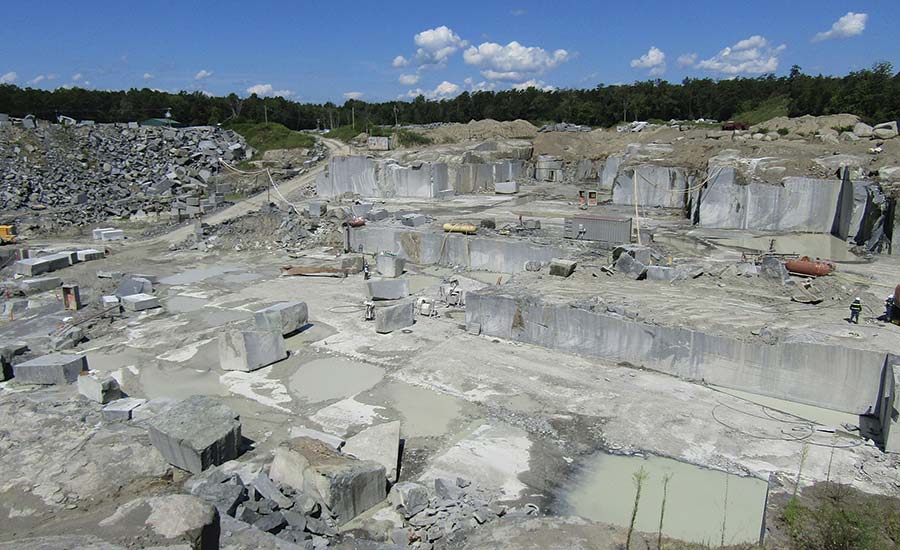A Trip With Granite Quarries in South Africa: Unveiling Nature's Creativity
A Trip With Granite Quarries in South Africa: Unveiling Nature's Creativity
Blog Article
Discovering the Rich Background and Lasting Practices of Granite Quarrying
As we stand on the precipice of discovering the detailed tapestry of granite quarrying, a journey with time exposes not simply the physical act of extracting stone yet also the cultural and historical relevance woven into the extremely material of this technique. From the ancient beginnings that laid the foundation for modern-day quarrying techniques to the sustainable practices that are shaping the future of this sector, each chisel mark on granite surface areas narrates waiting to be unearthed (granite quarries in south africa). The heritage of granite quarrying extends far past plain extraction; it is a testament to human ingenuity, strength, and the long-lasting allure of this marvelous rock
Old Beginnings of Granite Quarrying
Going back to old civilizations, the method of quarrying granite has actually been an indispensable part of human history and architectural improvement. The earliest proof of granite quarrying go back to ancient Egypt, where large pyramids and detailed sculptures were crafted from this durable stone. The Egyptians utilized primitive tools to remove granite blocks from quarries, showcasing the significance of this product in their monumental constructions.
Progressing in background, the Greeks also made significant contributions to the quarrying of granite. The Greeks used granite in various building wonders, such as temples and statues, showing their ability in shaping and sculpting this durable rock. The Romans even more refined the techniques of quarrying granite, employing advanced devices like knives and hammers to remove and form granite for their famous structures.
Through the centuries, the practice of quarrying granite has actually advanced, with modern-day technologies boosting effectiveness while maintaining the timeless appeal of this natural rock - granite quarries in south africa. From ancient civilizations to modern building contractors, the heritage of granite quarrying proceeds to shape our globe
Development of Quarrying Techniques
The evolution of quarrying strategies has been noted by a continuous development towards greater performance and precision in drawing out granite. Early quarrying methods involved hands-on labor with fundamental devices such as chisels, hammers, and wedges to draw out granite blocks from the planet.
In more recent times, the advent of machinery revolutionized the quarrying industry, allowing quicker extraction rates and raised productivity. Technologies such as diamond cord saws, high-pressure water jets, and pneumatic drills have come to be basic in modern-day quarries, permitting accurate cutting and lowered waste. Innovations in computer-controlled equipment and 3D modeling have enhanced quarrying procedures, leading to marginal ecological influence and enhanced sustainability methods. As the need for granite remains to climb, the advancement of quarrying techniques continues to be integral to meeting industry requires successfully and sustainably.
Social Value of Granite
Granite holds a profound cultural value throughout numerous worlds due to its enduring visibility in building work of arts and prized monuments. The social relevance of granite extends past its physical characteristics; it personifies durability, security, and timelessness, making it an icon of enduring heritages and customs.

Sustainable Practices in Quarrying
Among the abundant history of granite quarrying and its cultural significance exists a growing focus on sustainable practices within my explanation the sector. As ecological awareness and concerns concerning resource depletion have actually increased globally, the quarrying field has significantly accepted sustainable approaches to reduce its influence on the setting and surrounding areas.

Furthermore, improvement and rehab of quarry sites post-extraction are important to lasting methods. By bring back quarried areas to a natural or useful state, such as producing wild animals habitats or recreational spaces, quarriers can counter the ecological impact of their operations and contribute positively to the neighborhood ecological community.
Heritage of Granite Quarrying
With a historic backdrop soaked in workmanship and industrial development, what enduring impact has granite quarrying left on the landscape of modern-day culture? The heritage of granite quarrying goes beyond simple extraction techniques; it has actually formed building this post marvels, city landscapes, and social heritage worldwide. The resilient nature of granite has made it a recommended option for monuments, structures, and framework, standing as a testament to the ability and creativity of quarry workers throughout generations.
Additionally, the economic impact of granite quarrying can not be ignored. The industry remains to offer job opportunity and drive local economic climates in regions where granite removal is widespread. It has actually likewise stimulated technical advancements in quarrying methods and equipment, causing much more efficient and sustainable methods.
In regards to sustainability, the legacy of granite quarrying consists of initiatives to minimize ecological influences through reclamation jobs and accountable source administration. By stabilizing financial official statement passions with environmental stewardship, the market strives to make certain that future generations can proceed to gain from this enduring all-natural resource.
Conclusion

Report this page